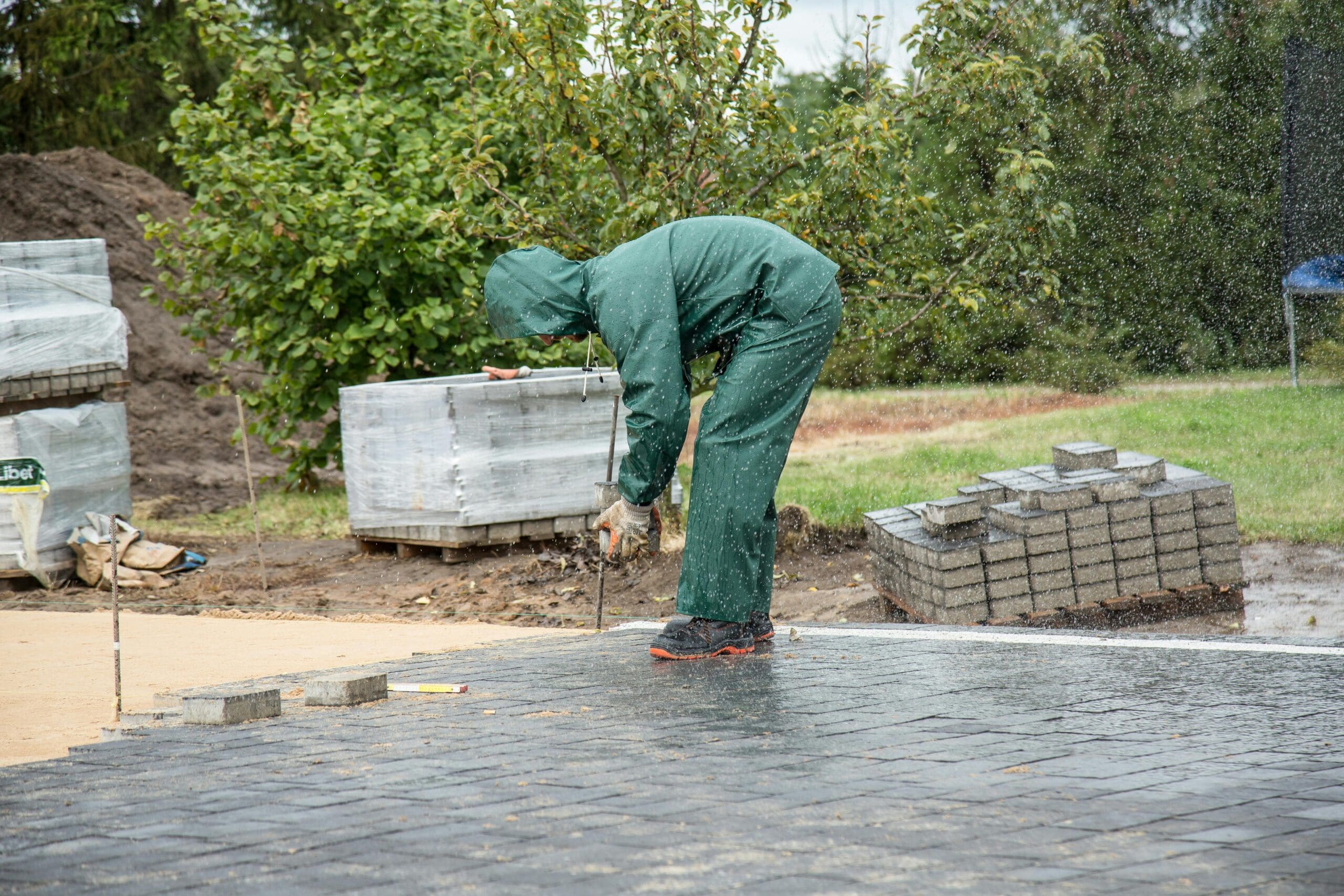Choosing the right contractor for your project is one of the most important steps you’ll need to take to get the results you want without the headaches. Whether you’re looking for a general contractor or a specialized subcontractor, use the following steps as your guide to getting your project done right.
Step 1: Understand What You Want
Your project really starts with you. There’s no need to begin vetting contractors until you have a pretty good idea of what you want to accomplish. But you also don’t need to have everything figured out before speaking with contractors because experienced professionals will help you turn general ideas into realistic plans.
Here are some questions you should ask yourself first:
- What do I want the finished project to look like?
- Why is this project important to me?
- How much am I comfortable spending?
These are simple but important questions that will help guide you through the rest of the process. And understanding your wants and needs will help you partner with the right contractor for your job and make better decisions along the way.
Step 2: Start Doing Your Homework
After doing some soul searching to better understand what you want, maybe you now have a crystal clear vision of what you want the finished product to look like. Many of our customers, however, still only have a general idea of what’s realistic and need some help putting the finishing touches on their project.
But who should you reach out to? And how do you know you can trust their recommendations?
Here are the three best ways to come up with your short list:
Referrals
The single best way to find a great contractor is by getting a referral from someone you trust who has worked with that contractor before.
If your mom has worked with a contractor on a previous project, she’ll be able to tell you all about the price she paid and whether or not she likes the finished product. What’s more important though, is she’ll be able to tell you what it was like working with them. Finding a group of people that are great to work with is extremely important, especially if they’ll be working inside your home.
Beware, not all referrals are created equal. If a friend or family member recommends a Westminster roofing contractor or general contractor to you, odds are that they are doing so with your best interest in mind. If another contractor or real estate agent is making the recommendation, however, take it with a grain of salt.
Many industry professionals receive a commission or other form of kick back for referring their clients to trade partners. While that doesn’t necessarily mean the referred company will do a poor job, it’s worth noting that there could be mixed motives.
Reviews
Reviews are like getting referrals from people you don’t know. The best online reviews include details like which employee(s) they liked and how the company communicated in addition to the quality of the work.
The amount of reviews are another interesting data point. Let’s say you’re comparing two companies with 4.5 star ratings. One company has 100 reviews, the other company has 5 reviews. The company with more reviews might have been in business longer or completed more similar projects which could mean they’re more experienced and qualified to handle your project.
It could also just mean that they put more of an emphasis on their online presence. Some of the best contractors out there are the old-school types who don’t bother with things like websites. But the smaller the company appears to be, the more we would recommend relying on personal referrals.
We’ve found generic reviews such as “great company” to be less-than-helpful as well as oftentimes being fake.
Ask Around
Some people get their renovation ideas from Pinterest or Houzz. Other homeowners get their ideas from their neighbors.
Let’s say someone down the street just remodeled their front door, driveway, landscaping, etc and you love the way it looks. Don’t be too shy to stop by and ask them who did the work!
Your neighbor will probably be thrilled to hear that their remodeling project is being noticed and envied. They’ll also be able to tell you whether or not they’d ever work with that contractor again. Think of this as a mix between a referral from someone you trust and an online review.
You’ll already know that you like their quality of work and the homeowner can help answer other questions you have. Just don’t ask them how much they paid.
Step 3: Check Credentials
Now it makes sense to start doing some vetting.
To safeguard your investment in your home, thoroughly vetting potential contractors’ credentials is paramount. Start by ensuring they possess the necessary licensing, which serves as a baseline of legitimacy and knowledge in their craft. Moreover, check for relevant insurance — including liability and workers’ compensation — to protect against unforeseen incidents.
In addition to licensing and insurance, scrutinize their track record by requesting references from past clients, which will offer insights into their reliability and quality of work. Affiliations with respected industry organizations, such as the National Roofing Contractors Association (NRCA), can also underscore a contractor’s commitment to professionalism and staying current with best practices and standards in roofing technology and techniques.
Licensing and Insurance
There are a number of different types of construction licenses but we’ll focus on B and C for this post.
A – General Engineering Contractor
B – General Building Contractor
C – Specialty Contractor
Stanton RECC is a licensed General Building Contractor. General contractors should be experts in managing complex projects comprised of multiple specialties. That being said, most GCs have a specific area of expertise which should be reflected in their project portfolio.
There are over 40 types of specialty contractor licenses in the state of California. These licenses cover specialties ranging from well drilling to elevators to painting. Specialty contractors should be experts in their specific field but are unable to perform or contract work outside of their licensed scope.
If a “contractor” does not have a license, they are not actually a contractor.
Making sure your contractor is insured is also an essential way to protect yourself. Just ask the company you’re vetting to show proof of insurance. Most general contractors carry at least a $1 million general liability policy.
Reviewing Past Work and References
Evaluating a contractor’s past projects and client feedback provides critical insight into their work quality and reliability.
- Examine their portfolio: Review the variety and quality of previous roofing projects.
- Ask for references: Request a list of previous clients who can provide feedback.
- Check online reviews: Look for consistent patterns of client satisfaction or concerns.
- Visit completed projects: If possible, see their work firsthand for a better assessment.
- Assess communication: Gauge how they address feedback and handle customer service inquiries.
Proper due diligence in this stage can significantly forecast the outcome of your roofing project.
These efforts will help ensure that your chosen contractor aligns with your expectations for quality and professionalism.
Evaluating Experience and Expertise
Qualifications are paramount in this industry.
A contractor’s tenure is often indicative of their skill level. When assessing a roofing contractor’s experience, it’s crucial to consider the complexity and scale of projects they have successfully completed. Moreover, examine whether they possess specialized training or certifications that set them apart. Such credentials are a testament to their commitment to excellence within the roofing profession.
Certifications convey a higher standard of proficiency.
It’s advisable to prioritize contractors who can demonstrate ongoing education. Because the roofing industry evolves with new materials and techniques, you’d want a professional whose knowledge is current and who adheres to the latest building codes and standards. Ensure they have a sterling track record of compliance with safety regulations and manufacturer specifications.
Years in business can signal industry resilience.
Seek out contractors whose work history spans over extensive periods. Longevity in the business not only implies financial stability but also indicates a sustained reputation for quality workmanship. Their continued operation suggests they’ve effectively navigated past challenges and maintained customer satisfaction throughout their tenure.
And if you’re interested in connecting with us, please do!
Step 4: Start Refining Your Project
By this point in the process, you should have:
- a pretty clear idea of your wants and needs,
- a shortlist of contractors you’re interested in, and
- verified that these contractors have the license, experience and ability to manage your project well.
This next step can be done with 2-3 contractors simultaneously or just with the single contractor you want to work with. Refining the scope of your project with multiple companies will undoubtedly take longer but could lead to better results due to having access to more ideas, subcontractors, manufacturers, etc. It can also help you better understand the market and whether or not a proposed price is reasonable.
Defining Scope and Scale
Your contractor must be able to provide you with a baseline cost, timeline and available options. If you’re still working with multiple contractors at this point, they may recommend different products which can be confusing. Make sure to ask questions to better understand what’s being offered and why.
Let’s say you want to replace your roof. Company A says you can only do asphalt shingles while Company B says you could also do tile. Which one is telling you the truth?
Some companies only know how to install one type of product which could be why Company A is saying you only have one option. But they could also be giving you an honest assessment if the roof structure couldn’t support the weight of heavier tiles.
Some companies try to sell you the most expensive option which could be why Company B is pushing the much more expensive tile roofing. But they could also be giving you a recommendation based not only on your individual roof but also on what other homes in the neighborhood have installed.
The more questions you ask, the more you’ll be able to make an educated decision on who to work with and what options are best for you.
Compare Bids
Take your time with this one. The lowest bid isn’t always the best one.
When reviewing multiple bids, ensure that you’re comparing them on a level playing field. This means considering more than just the bottom line. It’s imperative to examine the scope of work outlined, the quality of materials proposed, and the timelines for completion. Additionally, ensure that labor costs and potential extras are made transparent to avoid unexpected price inflations after the work begins.
Confirm that all bids adhere to the same specifications and quality.
For larger projects, we collect bids from multiple subcontractors. While price is certainly one of the factors in who we choose to work with, it’s definitely not the first. Here is how we internally rank our priorities:
- Quality of Work
- Customer Experience
- Availability
- Price
- Percent of Scope Earned
Budgeting Essentials
We’ve seen a lot of project, budgets and timelines over the years. Some projects go exactly according to plan while others have run into myriad challenges. It is really important to have open communication with a contractor you trust.
Understand Your Financial Limits: Start by setting a clear and firm budget for your project, factoring in all expected costs and potential overruns.
Evaluate Financing Options: If the project’s cost exceeds your available funds, consider financing solutions like home equity loans, personal loans, or contractor financing programs, ensuring you understand the implications of the interest rates and repayment terms.
Expect the Unexpected: Set aside a contingency fund of approximately 10-20% above the quote to cover unexpected issues that may arise during the construction process.
We recommend not starting a project that’s more than you’re comfortable with or able to pay.
Setting a Realistic Timeline
Establishing a well-defined timeline is extremely important…and also sometimes hard. Here are some helpful tips:
- Assess the Scope: Evaluate the extent of work to estimate a reasonable start-to-finish timeframe.
- Weather and Seasonal Factors: Consider local climate conditions that may affect project pacing.
- Contractor Availability: Align with the contractor’s schedule to determine potential start dates.
- Permitting Process: Factor in the time required for obtaining necessary permits.
- Buffer Period: Add a contingency for unforeseen circumstances or delays.
- Review and Adjust: Keep open communication with your contractor to revise the timeline as needed.
Discuss and agree upon the timeline with your contractor to set mutual expectations.
But remember that unexpected events may arise; a flexible approach allows for adjustments while keeping the project on track.
Step 5: Get Your Contract Right
This is usually the last step before your project kicks off.
Before signing any documentation, make sure it is accurate and includes everything you’re expecting your project to include. Review the details, the pricing, the payment schedule, the timeline and any included drawings.
Please note that most contracts can be signed electronically. Use that to your advantage.
You might prefer to have your salesperson with you to answer questions as you read through and sign each document. But what if your salesperson is pushy? What if they don’t actually know what’s included in the fine print?
Reviewing your contract documents electronically can allow you to read through each page more slowly, include a spouse or other stakeholder in the process and/or give you the space to come up with questions. If your contractor doesn’t have the ability to send contracts for signature electronically, you can always ask them to leave the contract with you for a few days before you sign it.
Both parties will be legally held to whatever is in the contract unless there are other reference documents that could be legally allowable. If you notice that an important item isn’t included in the contract, have your contractor revise it rather than relying on a verbal agreement.
The Simple Guide to Choosing a Contractor
Let’s sum this up with a review…
- Understand what you want.
- Start doing your homework.
- Check credentials.
- Start refining your project.
- Get your contract right.
When done right, a home improvement project can be an awesome experience. We hope this guide will help you the next time you start one.
Please feel free to let us know if there is anything we can do to serve you better.







